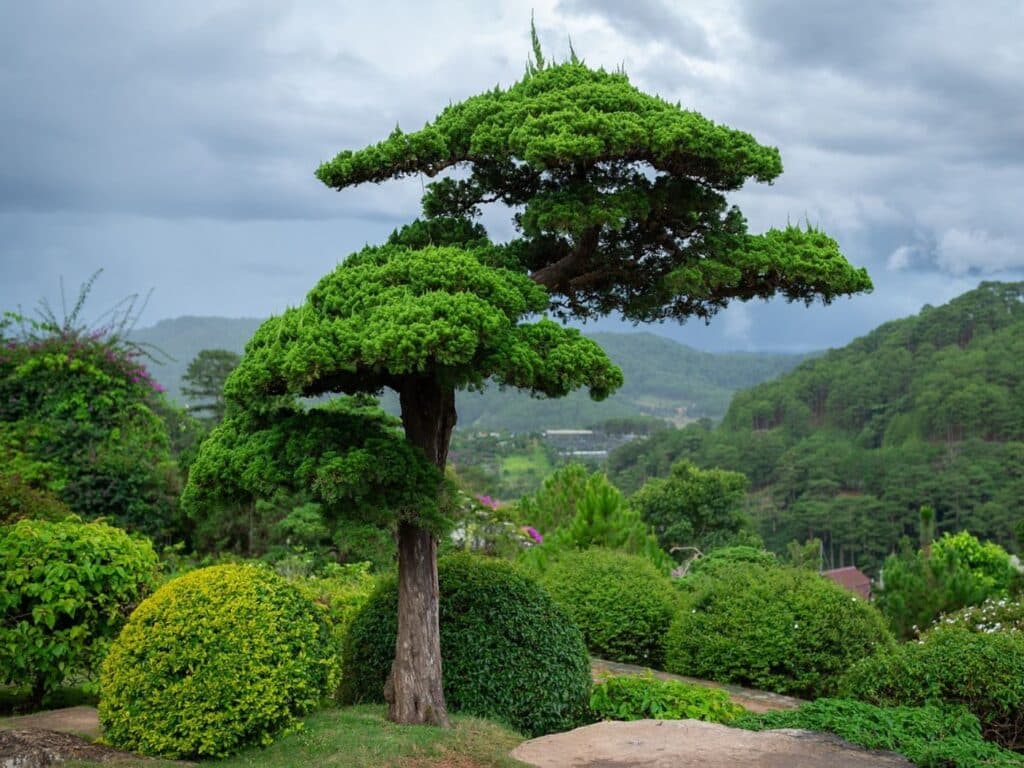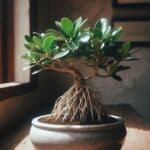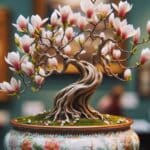When they hear the term bonsai tree, most people think of miniature trees that can easily be carried around with just two hands. Bonsai trees do, however, come in many different sizes, and big or large bonsai trees certainly make a much bigger impact compared to their smaller friends.
Large bonsai trees take up a lot of visual space, making them seem even more impressive. This larger yet miniature version of adult trees tends to be more challenging to care for due to their enormous size, but they are ideal for making a statement in outdoor spaces.
In this guide, we will discuss some of the best tree species to use if you want to grow a large bonsai tree, and we will share a list of some of the biggest and most impressive large bonsais in the world.

Big Bonsai Classification – What Is a Big Bonsai Called?
Bonsai trees are mostly classified by their size, shape, and number of trunks. There are three main categories in the size classification: miniature, medium, and large. Each of these main categories also has a couple of subcategories.
Large bonsai trees usually range from thirty inches up to 16 feet tall. There are four main subcategories for these bigger-sized bonsai trees, which include the following:
Omono Bonsai
Omono bonsai is the smallest in the large bonsai category. These trees usually range from 30 – 40 inches tall. Some Omono bonsai trees are also classified as Dai bonsai trees. These trees usually need about four hands to carry and can be challenging to move around.
Dai Bonsai
Dai bonsai trees are the same size as Omono bonsai trees. The exact difference between Dai bonsai and Omono bonsai trees is only known by Japanese bonsai masters who closely guard this secret from the general public.
Hachi-Uye Bonsai
Hachi-Uye bonsai trees are also called six-hand trees because you need a minimum of three people to move these trees and their pots around. The trees usually range from 40 – 60 inches tall.
Imperial Bonsai
Imperial bonsais are the biggest bonsai trees and are also considered the most majestic. This subcategory includes trees that range from 60 to 80 inches tall. They are usually referred to as eight-handed trees because four people must move them around. Most imperial bonsai trees are planted in pots, but some that are planted in the ground are also still considered bonsai.
The Biggest Bonsai Trees
Trees are mostly considered bonsai if they are grown in a flattened container and if they have a miniature appearance. Some imperial bonsai trees are, however, also grown inground. This makes it difficult to differentiate between a short tree and an actual bonsai tree.
It is also essential to distinguish the most significant bonsai trees from the oldest ones. Some of the oldest trees in the world are pretty small and fall under the medium bonsai category, while some bigger ones are much younger.
Now grab your measuring tape because we will discuss the most significant bonsai trees known to man.
#1 The Red Pine Bonsai – The Biggest Bonsai Tree in the World
Size – 16 feet tall and 30 feet wide
Location: Akao Herb and Rose Garden in Japan
Age: 600 Years
Species: Red Pine Tree
Akao Herb and Rose Garden’s Red Pine tree is the biggest bonsai tree in the world. This tree is also known as the pine of phoenix and it is grown and cared for in Japan.
The gigantic tree is still considered bonsai because it is grown in a large pot. This impressive tree is 16 feet tall and 30 feet wide and some of its multiple branches need to be supported to keep them upright.
As if that wasn’t impressive enough, this tree is also quite ancient. It is over 600 years old and still flourishing despite its ripe age.
#2 Ficus Retusa Linn
Age: >1000 Years
Location: Crespi Bonsai Museum, Italy
Species: Ficus Retusa
Height: 10 Feet tall
The oldest bonsai tree in the world is also one of the biggest. This Ficus Retusa Linn can be viewed in the Crespi Bonsai Museum in Italy, and it is over 1,000 years old. This particular tree is also planted in the world’s biggest bonsai container. The container was made and fired in a single setting.
This ancient bonsai tree is 10 feet tall, and displays exposed roots and intertwined stems.
#3 Ficus Bonsai Tree in Taiwan
Height: 7 Feet tall, 9 feet wide
Location: Taiwan
Species: Ficus
Taiwan is home to another huge bonsai tree and one of the biggest ficus bonsais in the world. It is common to see ficus bonsai specimens, but this one truly stands out with 7 foot height.
The ficus tree grows in a large black bonsai pot in an open garden, and its umbrella design and interesting root system give it a stunning overall appearance.
#4 Japanese Maple by Walter Pall
Age: >100 Years
Location: Europe
Species: Japanese Maple
Height: > 3 feet tall
A European bonsai artist, Walter Pall, is the creation of one of the biggest and most beautiful maple bonsai. This bonsai is almost a meter tall and over 100 years old. The beautiful tree has a stylish umbrella shape with a thick trunk, many exposed roots, and plenty of branching.
#5 The Rikusho-no-Matsu Ship Pine
Location: Kinkakuji temple, Japan
Age: 650 Years Old
Species: Pine
The Rikusho-no-Matso Ship Pine is among the most significant and exciting bonsai trees ever created. This tree is found in the gardens of the Kinkakuji temple, and it is about 650 years old. The tree is special since it is grown to resemble the design of a ship with branches and foliage resembling a ship’s mast and bow.
Unlike most bonsai trees, this one isn’t positioned in a pot. it is, however, still categorized as a giant bonsai because of its small stature and ripe age.
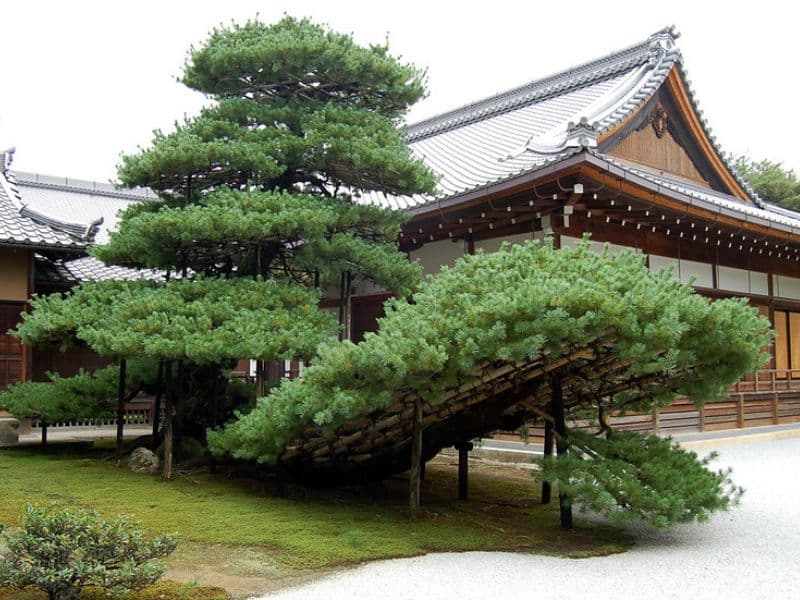
The Best Bonsai Species for Imperial Bonsai Creations
If you want to grow a large imperial bonsai, starting with a suitable tree variety is always best. Imperial bonsai trees are heavy, big, and bulky.
Focusing on tree species with a slower growth rate is usually best to make maintenance easier. Tree species with a fast growth rate require frequent repotting and will be much harder to maintain. It is also best to grow a tree species that grows well outdoors, which is relatively sensitive since you won’t be able to move it indoors or relocate it easily.
Let’s look at some of the best varieties to add to your garden to grow your imperial bonsai.
Pine Tree
The biggest bonsai tree in the world is a red pine tree (Pinus resinosa), but any pine tree (Pinus) should do just fine if you want to grow a giant bonsai.
In natural growing environments, pine trees can grow up to 260 feet tall, but most species tend to reach only 150 feet tall.
Some of the most common pine tree species for bonsai include Japanese black pine and Japanese white pine. These trees are common for bonsaiing because their needle-like foliage gives the tree a more scaled appearance, and the hexagonal bark shape makes it look quite ancient. These trees can also easily be shaped into any bonsai form.
Pine trees are considered the most difficult type to bonsai and aren’t recommended for beginners.
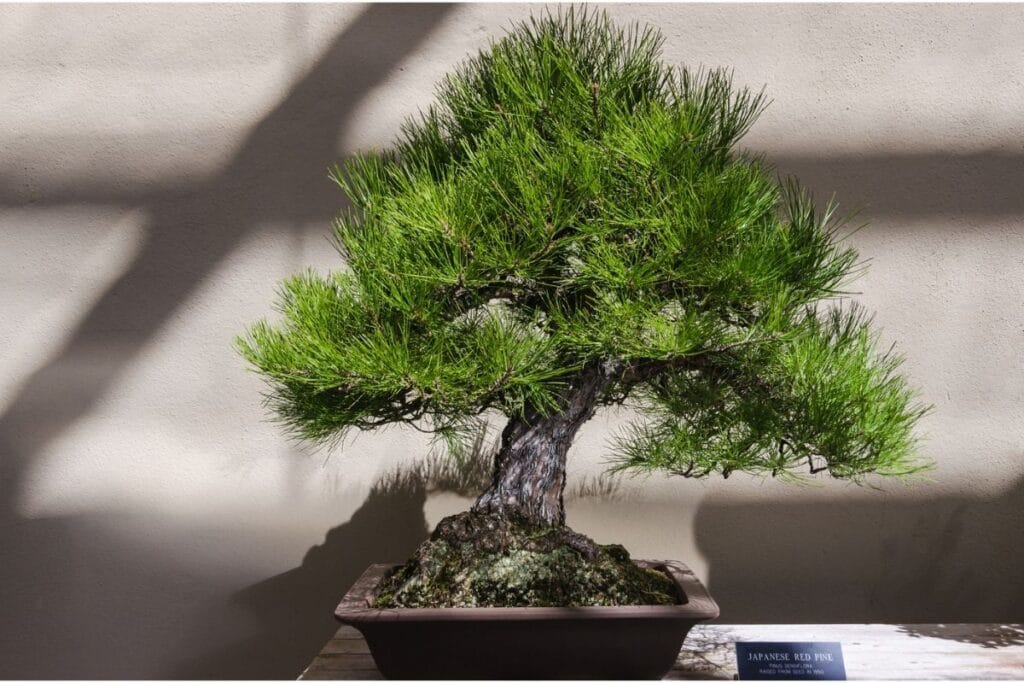
Ficus Tree
Plenty of big imperial bonsai trees are made from ficus (Ficus) trees, and the two most commonly used for bonsai include the Ficus retusa and Ficus ginseng varieties.
Ficus trees are ideal to grow a large imperial bonsai quickly because they have a fast growth rate. This fast growth does, however, mean more maintenance in the long run since you need to repot the bonsai every 1 – 3 years.
This species is popular because it is easy to care for and its form can easily be altered into any bonsai shape. Ficus bonsai is a perfect addition to a sunny garden, adding lots of beauty and charm with its evergreen leaves.
This tree variety is suitable for bonsai beginners since it is easy to care for and doesn’t require too much water or effort.
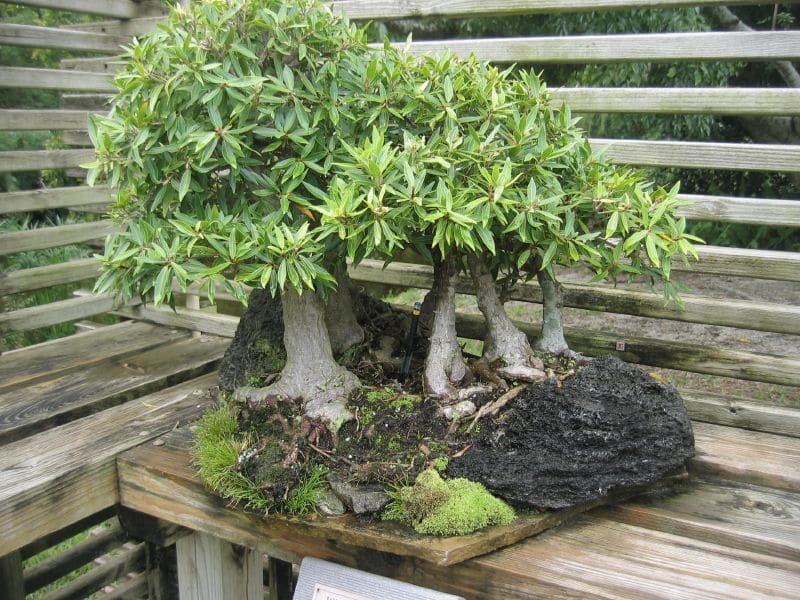
Japanese Maple Tree
Japanese maple trees are very popular for growing bonsai because the deciduous leaves transform into beautiful golden and red hues during the autumn season.
These trees have a moderate growth rate and are easy to train through pruning or wiring. The trees are relatively easy to care for and can be suitable for bonsai beginners.
In natural form, these trees can grow up to 30 feet tall and they are perfect for creating medium to large-sized bonsai creations.

Juniper Tree
Juniper trees are some of the most common plants to use for bonsai. There are many different species to choose from, and the slow growth rate of these trees makes them ideal for large and bulky bonsai creations since you will have to repot them less often.
The tree is easy to train, prune, and care for, and it is one of the best for first-time bonsai owners.
Junipers can grow up to 131 feet tall but are suitable species for growing a medium to large bonsai for your garden.

How to Grow a Bigger Bonsai Tree
Bonsai trees are usually planted in a small pot, and their root systems are regularly pruned to stunt the growth of these trees and keep them small. In most cases, it is best to start a bonsai from seed or to grow it from cuttings.
If you want to grow a bigger bonsai and need it to overgrow, the best thing you can do is take a bigger cutting or young plant. Plant this young plant in a bigger container or a regular garden pot with a deeper and wider size compared to your average bonsai pot.
The deeper the pot is, the taller your bonsai will likely grow. You can keep pruning and wiring the tree inside this larger pot to create a desirable shape. If you wait too long before wiring, the stem might become woody and unsuitable for shaping.
Once the tree is big enough and has a relative bonsai shape, you can repot it in a flattened container that suits the larger tree just right. By repotting it in a smaller flattened container, you will keep the tree from growing bigger, and its size will be maintained.
Conclusion
Pine, ficus, Japanese maple, and juniper trees are all fantastic selections if you want to grow a big bonsai tree. These larger bonsai creations might be more challenging to move around, but they are terrific for creating stunning outdoor spaces with lots of interest.
We hope you enjoyed our guide and will have lots of fun seeking out a good plant that you can transform into a gigantic bonsai tree.
Read more:

